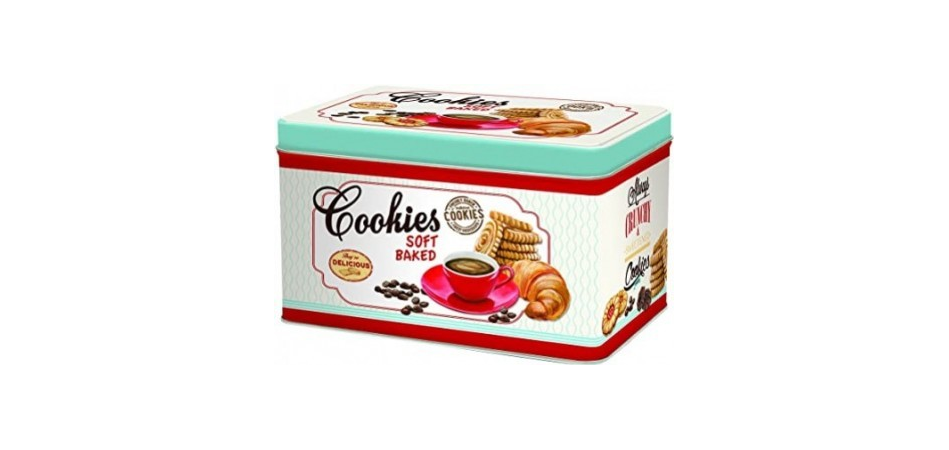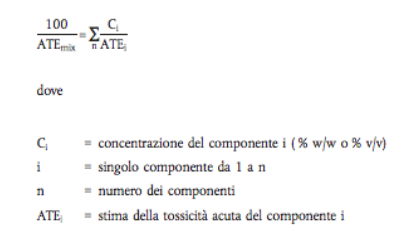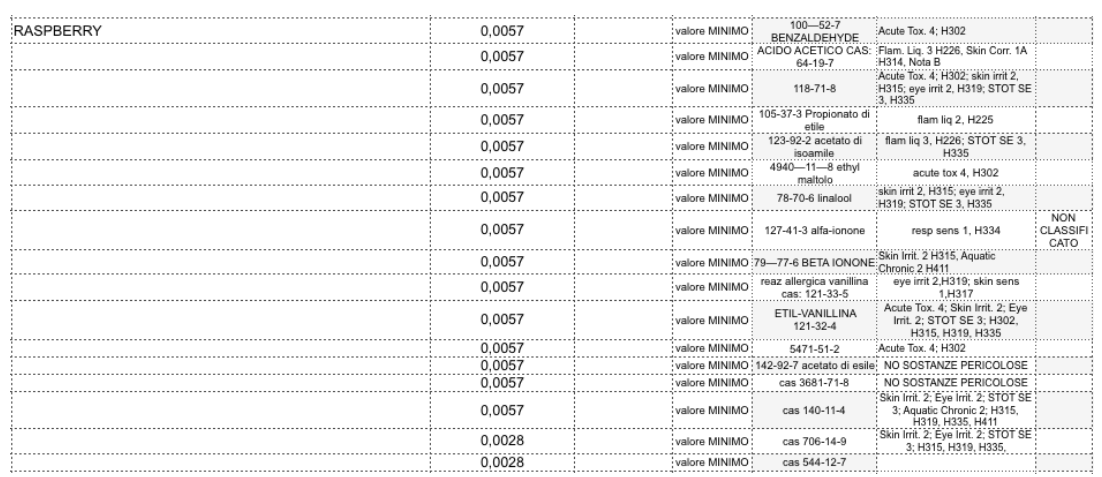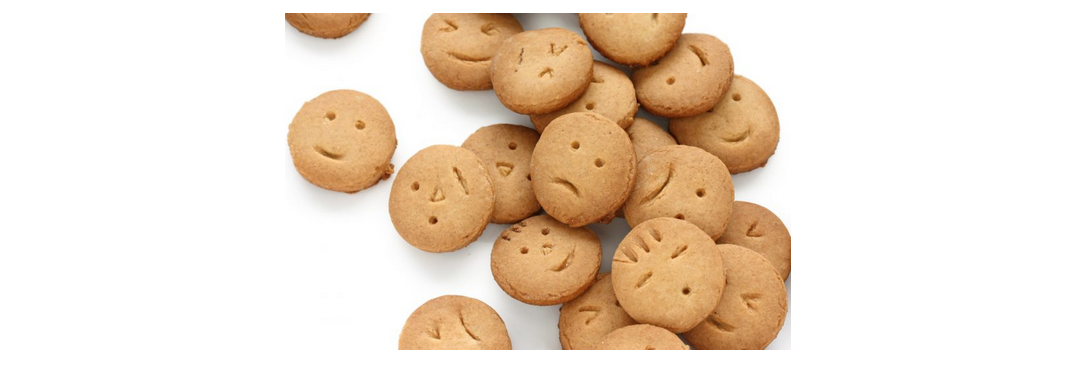
Labels: between biscuits and regulation
We have described our products as 'food' and therefore not dangerous, especially when contrasted with the toxic substances from burning cigarettes. Perfect: but food does not rhyme with not classifying and not warning.
For a long time, we have been talking about labels, liquids with identifiable deviations from standards, generic declarations of conformity by those involved, and lack of consumer information on the subject.
Let us try to talk about it a little!
The subject that regulates the Classification, Labelling and Packaging of inhalation liquids is primarily the CLP 1272/2008 Regulation (Classification, Labeling and Packaging).A regulation published in the Official Journal of the European Union 'only' almost 8 years ago: on 16 December 2008. It goes without saying that its validity extends to the entire European Union, it is not just "our thing" and, to be precise, this regulation regulates all products that circulate commercially in the European Union, even if they come from other continents.
Given then that since August in the States the FDA has laid down rather strict rules, is it not the case that we are in danger of becoming the receptacle for what overseas is undergoing a very strict regulatory process? Sorry this is true if we do not comply with the law of course!
In many fora we have described our products as 'food' and therefore not dangerous (do you remember the 'vanilla bread and angels' ? Battle horse of endless threads on our Facebook groups), especially when contrasted with the toxic substances from burning cigarettes. Perfect: but food does not rhyme with not classifying and not warning. Let us also leave aside for the sake of expediency the eaten and inhaled food scenario, which is certainly a more complex topic and one that does not have its own well-defined regulatory position at the moment (thankfully!!).
We are now also dealing with the TPD regulatory scenario, which among other things calls for' manufacturers and distributors to take responsibility for the quantities of substances recognised as toxic or in any case undesirable present in vapours as inhaled during vaping. In essence, we are not only talking about Acetyl Proprionyl, Diacetyl or Acetoin, but also about other and much more troublesome substances such as acrolein, toluene, benzene, formaldehyde, crotonaldehyde, ethylene and diethylene glycols, heavy metals (lead, arsenic...), nitrosamines NNN and nitrosamines NNK, nicotine (why not!).
So there are, according to the timetables provided for in Italy by D.L. 6/2016 and by the CLP regulation in our case, two types of information to be provided on the packaging of liquids containing nicotine: those relating to the TPD (i.e. the part of the hot release and the nicotine addiction information phrases) and those relating to the CLP, which deals with the liquid as a chemical mixture.
Beautiful! But then in the case of nicotine-free liquids I don't have to say and write a damn thing: nothing could be more wrong, the CLP and only it also applies to them. You may ask: but if you have to speak only according to TPD about those substances there then they are not in nicotine-free liquids: another mistake! In nicotine-free liquids the only substance that must not exist by definition and standard is just you: nicotine. Everything else of course can be there: acrolein, which is formed depending on the vaping temperature, lead and arsenic, which are normally contained in propylene glycol, diacetyl and its siblings (companions?) and an endless series of molecules that each have their own recognised hazardous characteristics. Again, the manufacturer or distributor is obliged to follow the harmonisation criteria for the classification labelling and packaging of hazardous mixtures. The classification takes into account all the i-substances present in the preparation, which add up to define the classification of the preparation. The concept is simple, perhaps a little more insider to apply.
Don't worry: the dose makes the poison!
The first thing you need, at this point, is to know what you are using: trivial? NO, it is not at all, you need to investigate, get documented and certify, within the limits of industrial secrets the 'compounds' present in all the sub-mixes used and any 'contaminants' present in the raw materials. So the first thing is to select suppliers (or identify proprietary preparations of known composition), who provide both their CLP in the most comprehensive and responsible manner through their regulatory as well as the necessary information for classification by users of these raw materials.
But we are not really talking about nicotine any more: of course not! The nicotine may or may not be there, it does not matter.
Imagine an inhalation mixture as a football team, each athlete has his or her own role, some may even play overlapping roles with the others, but it is the team as a whole that loses or wins the game or at least can be said to have played well or not. It doesn't matter if in the attacking play we don't find Mr Nicotina with the number 9 on his jersey undermining the opponents' goal.
Did I go long? To sum up: in essence, all the compounds together define whether the mixture is classifiable as dangerous, so it is necessary to identify the class and category of danger and the corresponding pictogram and the warnings which can be either danger or caution. I'll stop because otherwise it gets long, but I think we understand each other.
Moving on, to whom does CLP apply? For example not to food flavourings covered by Directive 88/388/EC, to medicinal products covered by Directive 83/2001/EC, to medical devices covered by Directives 90/385/EC and 93/42/EC, to animal feed etc..
In our case they apply and the reference indications are those in part 3 of annex 1 of the regulation where health hazards are mentioned.
What does this mean? that in Annex 1 we find a series of indications that allow us to understand, once we know the mixture, if it falls and in what way in the cases of:
- acute toxicity,
- skin corrosion or irritation,
- severe injury or eye irritation,
- respiratory tract or skin sensitisation,
- germinal cell mutagenicity,
- carcinogenicity,
- reproductive toxicity,
- specific target organ toxicity,
- aspiration hazard.
Finally, we can talk about dangers to the environment - never mind, we'll spare ourselves that one, but we need to check and report on that too if the case arises :-) The formula used for acute toxicity, for example, is this:

Let us now see for example a diagram referring to a raspberry flavouring (raspberry), the one in the table is produced by a company we all know and love and which seriously informs its customers of the specifications of its product. So we take the information, put it into the evaluation system and get a result like this:

In this case, its final concentration is 0.57% and we already see that the molecule with CAS number 127-41-3 called alpha-ionone is to be contained because it is suspected in the literature of being a 'resp sens 1' to which a H334 warning corresponds. Even if it is not classified by everyone: better to be on the side of reason! The same thing will be done with all the flavourings present, with the molecules that will be integrated into the mixture in any case, and with all the substances present, eventually providing the overall picture.
Well, the fog is lifting, now what do I do with the Acute Toxicity Estimate ( ATE)? Note that the formula applies if the toxicity estimate is available for all components, otherwise the system is another, but it doesn't matter to explain it here, you don't have to make the labels, you just have to understand what it says!
We were saying: now that we have finally found this value, we compare it with this table:
And... magic!!! Here are the famous pictograms given a meaning: the exclamation mark, the skull but, above all, the warnings i.e. the H phrases and the cautionary advice i.e. the P phrases.
So what happened, we classified the specific mixture and depending on its composition we now know what to put on the label to warn the consumer... Oops the vapers in our case, of what their respiratory tracts will be dealing with when vaping.
But then not all mixtures are the same, it's not true that I can put an exclamation mark everywhere and I'm fine!
Of course not: it may not even be necessary, but I must understand this and be able to take responsibility for it just as well as for putting the little skull with a nice H310 (lethal if swallowed) on the side. Remember? We are not even talking about nicotine anymore, but about everything else..
So the H warnings and product-specific P phrases must be stated on the label
All this information must be documented in the SDS (safety data sheet) and must be congruent with what is written there.
... But I don't know English and I only found an MSDS (Material Safety Data Sheet) which I can't read: of course it's no good, the information must be in the language of the country where the product is marketed, both for the SDS and the label which is basically the summary with the basic information.
And now let's talk about biscuits!
If this blessed mixture has been classified as hazardous, as evidenced by the exclamation mark in the pictogram, there are a few more requirements to make a label 'compliant': this time Article 35 under Title IV raises its voice:
Packaging containing a dangerous substance or mixture supplied to the public shall not have a shape or design which attracts or arouses the active curiosity of children or is likely to mislead consumers, nor shall it have a presentation or design similar to those used for foodstuffs, animal feedingstuffs, medicinal products or cosmetics which is likely to mislead consumers.
Therefore, we cannot in this case put photographs or drawings of biscuits, doughnuts, icing, strawberries, candies and use names that might induce in younger consumers the desire to eat a dangerous substance..
Children are only small, not dumb, and as such must be defended. This is what the law says, precisely according to their age. Perhaps that is why the TPD speaks of tamper-safe atomisers, it is also not certain that children will be tempted to drink a liquid straight from the atomiser! But to date, in the collective imagination, it seems that their curiosity and gluttony can only be expressed towards the bottle of liquid. Hardware manufacturers are only just beginning, as far as I know, to adapt their products to these issues, of course they are mostly Chinese! not American!
But then no more biscuit or strawberry liquids? Of course not, all you have to do is observe the rules, which I have told you light-heartedly, in a serious and professional manner. Not doing so means, from my point of view, not only not placing any value on the health of one's customers, but also implementing a policy of infringement and unfair competition against those who respect the rules. Even the less gifted know that a nice image of a juicy strawberry or a biscuit covered in a steaming hot cream has a better impact on the consumer, who is thus oriented to prefer products with this type of marketing, instead of those with a packaging that is the result of a sometimes complex and punctual verification work..
Do you like to win easy?
Many times in the preparation of a blend one realises that that kind of taste, so intense and pleasant, would force one to affix danger pictograms that are proportionally unattractive to the taste, and so one decides to give up a product that focuses on these aspects in favour of a safer one. These are choices with a certain profile of sacrifice, but believe me, none of the manufacturers who apply this philosophy are so incapable that they do not know how to put the molecules that are responsible for this positive impact on our senses into their blends, it is actually technically much easier.
It's just a choice of respect that is detrimental to the volume of business, as the commercial orientations induced by some operators are now, which are saturating the market with these illegal products, perhaps by sheltering themselves outside the Italian border and leaving the dirty work of spreading illegal and poor-quality chemical vaping to the Italian shops that become the reference for the promised control actions by the authorities.
Are we in the age of the Cookie God? Or in a time when vaping can actually raise the bar and become a means to quit smoking and enjoy a passion for improving one's health, becoming uncriticisable by its detractors?
Everyone is free to answer and act independently!



Comments
No comment at this time!
Leave your comment